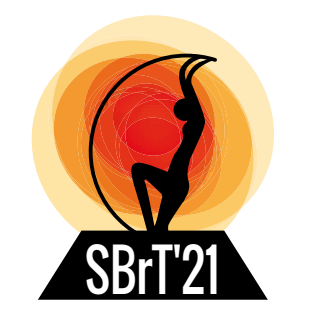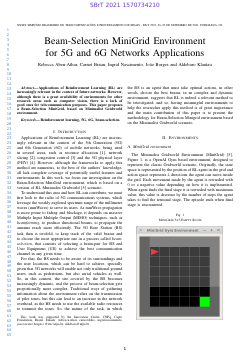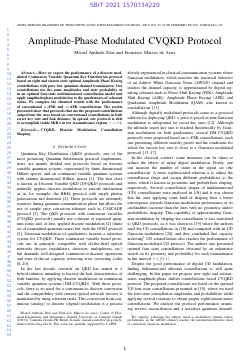
XXXIX Simpósio Brasileiro de Telecomunicações e Processamento de Sinais

Localização em ambientes internos baseada em regressão kNN utilizando beamforming
David Alan de Oliveira Ferreira, Celso Barbosa Carvalho
DOI: 10.14209/sbrt.2021.1570734205
Keywords: localization kNN regression quartiles PCA
Abstract
To locate mobile devices on wireless networks, you can install three or more fixed devices, whose transmitted signals are used as location parameters. The problem with this approach is the increase in energy and monetary costs. Thus, in this article a location method using a single transmitter with multiple antennas is proposed. In this work, static tests were performed in a simulated environment of 100m2 with 361 reference points for signal power measurements. As test results, the proposed method stood out for using only 2 characteristics of signals, providing the location with an average error of 0.7979 m, standard deviation of 0.9703 m and accuracy of approximately 89% for errors below 2 m.Download

Beam-Selection MiniGrid Environment for 5G and 6G Networks Applications
Rebecca Almeida Aben-Athar, Carnot Braun, Ingrid Nascimento, João Paulo T Borges, Aldebaro Klautau
DOI: 10.14209/sbrt.2021.1570734210
Keywords: Reinforcement learning 5G 6G Beam-selection
Abstract
Applications of Reinforcement Learning (RL) are increasingly relevant in the context of future networks. However, although there is a great availability of environments for other re- search areas such as computer vision, there is a lack of good ones for telecommunication purposes. This paper proposes a beam- selection mini-grid type of environment and gives preliminary results using a Minimalist GridWorld version.Download

Amplitude-Phase Modulated CVQKD Protocol
Micael Andrade Dias, Francisco M. de Assis
DOI: 10.14209/sbrt.2021.1570734220
Keywords: CVQKD Discrete Modulation Constellation Shaping
Abstract
Here we report the performance of a discrete modulated CVQKD protocol based on eight and sixteen state optimal APK constellations with pure loss quantum channel transmission. Our constellations use the same amplitudes and state probability as in an optimal four-state unidimensional constellation model and applies amplitude/phase modulation on the quadratures of coherent states. We compare the obtained results with the performance of conventional m-PSK and m-APK constellations. The results show that the proposed constellations applied to CVQKD protocol outperforms the conventional PSK and APK based protocols in both secret key rate and link distance. In special, our protocol is able to accomplish viable SKR's in low transmittance regime, ..\tau<0.2...Download